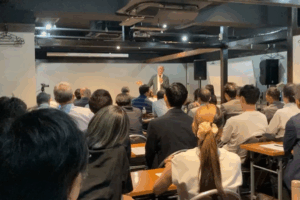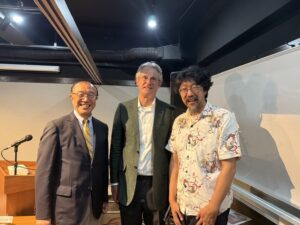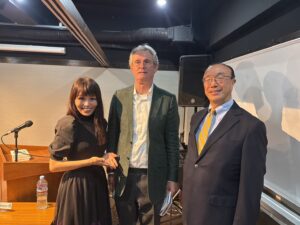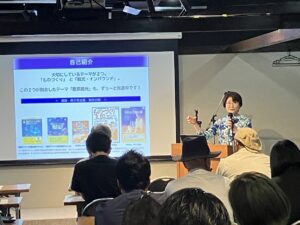David Atkinson revisits "New Tourism Nation Theory" on September 24, 2025
Presenter: David Atkinson, President and CEO, Konishi Art and Craft Co., Ltd.
In his 2015 book "The New Tourism Nation Theory," he argued that Japan, facing a rapid population decline, could become prosperous through the tourism industry, using numerical analysis befitting a former analyst.
Ten years later, just as he predicted, inbound tourism has increased, and annual revenues are approaching 10 trillion yen, making it the second-largest industry after automobiles. Atkinson says this is not a prediction, but the result of his continuous lobbying of the government to make it happen.
Unfortunately, Aichi and Nagoya are often referred to as "losers in inbound tourism" and have yet to fully reap the benefits of a tourism economy. The requested theme for this lecture is to bounce back and "revitalize Aichi and Nagoya!"
Aichi and Nagoya have thrived thanks to the automobile industry, so the main reason for this is that local governments have not made a serious effort to promote the tourism industry. In fact, government tourism-related policies have not been fully utilized in Aichi and Nagoya. To revitalize tourism as an industry, it is necessary to create facilities and features that attract tourists, rather than simply promoting the value of history and culture.
The Honmaru Palace of Nagoya Castle is decorated with a painting of a tiger. The English description reads "Tiger." Even foreigners can tell it's a tiger just by looking at it. I'm curious about the reason and story behind the tiger design, but the explanation isn't written in English. This doesn't pique foreigners' interest.
From now on, I hope you'll re-examine your English descriptions from a foreigner's perspective and work to write descriptions that will interest them. When I once saw the great hall at Nijo Castle in Kyoto, the English description for the room read "Big room." It was clear that it was a great hall. However, this great hall was where Tokugawa Ieyasu held the ceremony to receive the title of Shogun. It was also where Tokugawa Yoshinobu returned power to the Emperor. In other words, it is a very significant room, symbolizing the beginning and end of the Edo period. By carefully including these explanations in English, Nijo Castle has become a popular destination for inbound tourists.
If Aichi and Nagoya also continue to develop facilities that go back to basics like this, I believe it will produce significant benefits for the tourism economy, as these are attractive major cities.





